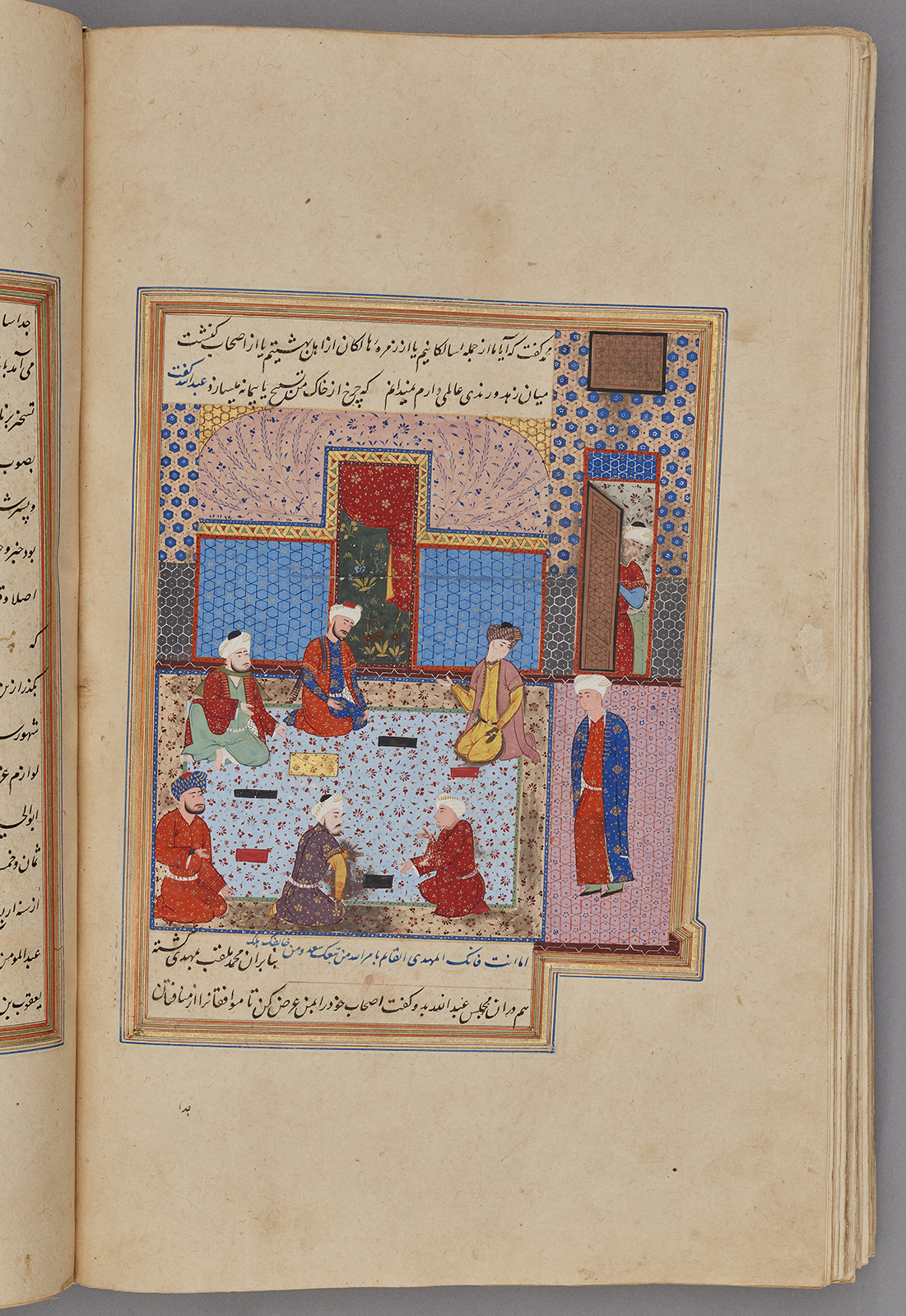Click on the image to zoom
Muhammad ibn ʿAbdallah ibn Tumart is proclaimed Mahdi, Folio from a manuscript of Nigaristan
- Accession Number:AKM272.f181v
- Creator:Author: Ahmad b. Muhammad Ghaffari, Persian, died 1567 Scribe: Ahmad al-Shirazi
- Place: Iran, Shiraz (probably)
- Dimensions:38.7 cm × 25 cm × 6.4 cm
- Date:1573-74 CE/980 AH/AH 980
- Materials and Technique:Ink, opaque watercolour, and gold on paper
The miniature painting "Muhammad ibn ʿAbdallah ibn Tumart is proclaimed Mahdi" is from an intact manuscript of Kitab-i Nigaristan, a collection of anecdotes and historical incidents written in prose by the historian and scholar Ahmad Muhammad Ghaffari (1504–1567/68) of Kashan in 1551–2. This illustrated manuscript, dated 1573, was probably produced in a Shiraz workshop.
See AKM272 for more information about the manuscript and links to the other illustrations.
Further Reading
The illustration is divided into two parts, each offering a different perspective. In the main field, which fills the space between the upper and lower text, the central action takes place: six figures sit in a circle within a room. Before them lie envelopes coloured red, black, and yellow.
The illustration depicts a meeting in which Muhammad ibn ʿAbdallah ibn Tumart, founder of the religious reform movement of the Almohads in today's Morocco, is proclaimed Mahdi, the rightly guided caliph. It captures the moment when ʿAbdallah Tashrishi —according to the anecdote he was assumed to be mute and his sudden eloquence is considered a miracle—rises in the assembly and miraculously begins to speak. He requests that those present recognize the divine calling of Muhammad ibn ʿAbdallah ibn Tumart.
According to the text, the foundation stone of the Almohad rule over the west of the Islamic world is also laid at this meeting and is dated in the year 1120/21.
Similar to other interior scenes in the Nigaristan, this illustration depicts both the inside of a room and the façade of the room (or another wall of the same room) without the rules of central perspective. It also uses a similar spatial division, where a main room is situated between two text boxes and the side scene is predominantly the façade of the same room.
- Elika Palenzona-Djalili
Notes
1. To learn more about Almohads, see: https://referenceworks.brillonline.com/entries/encyclopaedia-of-islam-1/almohades-SIM_0675?s.num=0&s.rows=20&s.mode=DEFAULT&s.f.cluster=Encyclopaedia+of+Islam&s.start=0&s.q=almohades
References
Bel, A., "Almohades", in: Encyclopaedia of Islam, First Edition (1913-1936), Edited by M. Th. Houtsma, T.W. Arnold, R. Basset, R. Hartmann. ISBN: 9789004082656
https://referenceworks.brillonline.com/entries/encyclopaedia-of-islam-1/almohades-SIM_0675?s.num=0&s.rows=20&s.mode=DEFAULT&s.f.cluster=Encyclopaedia+of+Islam&s.start=0&s.q=almohades
Note: This online resource is reviewed and updated on an ongoing basis. We are committed to improving this information and will revise and update knowledge about this object as it becomes available.


